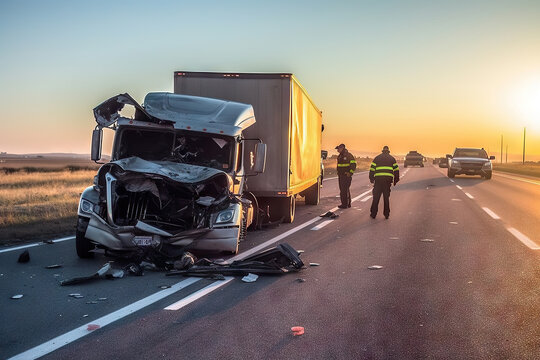Truck accidents often leave a devastating impact, requiring detailed investigations to uncover the truth. In Washington, 2023 saw 2,128 semi-truck crashes, including 68 incidents that tragically resulted in 77 deaths. These statistics highlight the importance of examining factors such as driver logs, vehicle maintenance records, and surveillance footage to determine the causes of such collisions.
A Washington truck accident lawyer specializes in navigating these intricate investigations. By identifying critical evidence and leveraging expert testimony, they ensure that victims can hold negligent parties accountable. This proactive approach can make all the difference in securing fair compensation for injuries, damages, or losses.

Here’s how truck accident investigations uncover key evidence.
The Preliminary Inquiry
After an accident, the investigation focuses on securing the area where it occurred. This can be done with the help of law enforcement officers and emergency personnel, as well as potentially federal authorities, to assess any imminent dangers that may be present. These include hazardous materials that require cautious management to guarantee everyone’s safety. Investigators gather evidence as soon as the location is deemed safe, beginning with visible signs like tire marks or scattered objects, which can offer valuable information about how the collision unfolded.
Witness Accounts
Obtaining testimonies from witnesses is an important element of the investigation procedure. Witnesses give descriptions that help investigators piece together the events that transpired despite their subjectivity factor in guiding the direction of the inquiry process.
Analyzing Vehicle Data
Today, trucks are outfitted with systems that capture important data points. For example, Event Data Recorders (EDRs) keep track of details like speed, braking habits, and engine functionality. By accessing this information, investigators can piece together the events leading up to an accident. Moreover, GPS systems and telematics provide details about the truck’s journey and operations, creating an overview of the incident.
Analyzing Physical Clues
Evidence from the accident scene offers clues for investigators to investigate what happened, inspecting the damage on vehicles to pinpoint where they collided and how force was distributed during impact. Studying tire tracks and scratches, as well as moved objects, aids in piecing together how the crash unfolded structurally. Furthermore, forensic specialists could study paint transfers or damaged parts to ascertain where vehicles or other items came into contact with each other.
Driver’s Role and Responsibility
The driver’s negligent behavior and state during the accident play a role in discovering the truth of what happened. Typically, during investigations, the driver’s records are dipped into to ensure compliance with rest regulations and working hours. Factors like fatigue or distraction may have played a part in the event. Interviews with the driver and reviewing records are ways to ascertain if anything affected their capability to drive safely.
Regulatory Adherence of the Company
Investigators tasked with ensuring the operation of their fleets review trucking firms’ policies on vehicle upkeep and driver education to ensure compliance is met adequately. A failure to maintain equipment or provide training could point to negligence on the part of the company. In investigations, firms are often scrutinized for their compliance with safety rules and adherence to industry norms.
Engaging with Professionals
Professionals from different backgrounds often play a role in accident inquiries. For example, accident reconstruction specialists apply physics and engineering concepts to recreate the crash scenario, mechanical experts inspect vehicle malfunctions, and medical professionals assess injuries suffered by individuals involved. Each expert’s conclusions contribute to a deeper comprehension of the event.
The Legal Results
Delving into the facts behind truck accidents has consequences. It involves pinpointing responsibility by examining the evidence collected to determine blame. The results of these inquiries can impact battles and insurance claims while also prompting policy adjustments. Grasping the details of the situation guarantees favorable outcomes. This leads to measures being taken to avoid similar occurrences in the future.
Technological Advancements in Investigation
Technology has significantly transformed the process of investigating truck accidents by introducing methods like using drones to capture views of accident sites and digital forensics to analyze electronic data thoroughly to reconstruct events accurately. This advanced technology helps investigators process evidence efficiently and enhances the quality of investigations.
End Note
Investigating truck accidents requires a multidimensional method that involves analyzing evidence and electronic data while also considering human aspects to construct a detailed storyline revealing vital information. This in-depth procedure solves cases and contributes to a deeper comprehension of road safety that influences future preventative actions.

